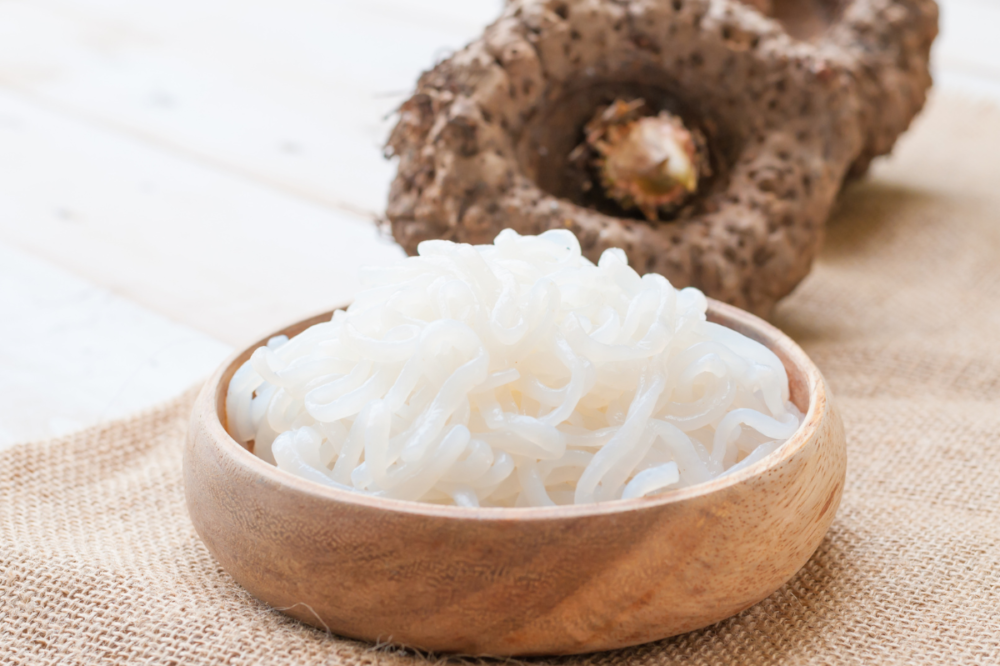Glucomannan for weight loss and satiety

One common feature of hypocaloric diets is the intense hunger that is observed, especially during the first period. Is there a way to lose those extra pounds with a better sense of satiety and without the unpleasant feeling of hunger?
Table of Contents
What is glucomannan?
Glycomannan is a polysaccharide found at the roots of Amorphophallus Κonjac, a plant which grows in Asia. Glucomannan is an insoluble fiber that absorbs large amounts of water in its molecule. It consists of β-D-glucose and β-D-mannose, molecules that bind to each other with β-1,4 glycosidic bonds.
Properties and benefits
Polysaccharides, normally, are broken down by the enzymes of saliva and pancreas, in stomach and intestine, respectively. However, because of it’s chemical structure, the molecule of glucomannan can not be broken down by human digestive enzymes, thus passes relatively unchanged into the colon, where it is highly fermented by colonic bacteria.
Glucomannan can absorb 100-200 times its weight in water. With the absorption of water, it forms a gel in the intestinal tract, creating a feeling of inflating and saturation. This leads to less eating and calorie consumption, resulting in better satiety.
Many studies have shown that as a plant fiber, glucomannan can also affect cholesterol levels by reducing LDL and VLDL cholesterol in blood. As an insoluble plant fiber, glucomannan helps normalize glucose blood levels, primarily by helping reduce postprandial hyperglycemia.
Finally, as a plant fiber, glucomannan improves peristaltic gastrointestinal tract movements, increases stool volume and facilitates bowel motility, thereby helping fight constipation.
Thanks to the above features, studies have shown that supplementation with glucomannan contributes to:
- Weight loss in overweight and obese individuals
- Reduction in cholesterol, TGL and LDL cholesterol levels
- Reduction of postprandial glucose levels
- Increased satiety
- Reduced appetite for food and snacking
- Treatment of constipation
Dosage and method of administration
Glucomannan is recommended to be taken with plenty of water 30 to 60 minutes before eating. In particular, the 2-4 gr daily, evenly distributed throughout the day before breakfast, lunch and dinner, contributes to better control of appetite and satiety.
Contraindications – side effects
There are no contraindications for taking glucomannan supplements, except for pregnant and breastfeeding women and children. The most common side effects are flatulence and gastrointestinal discomfort. Doses greater than 5g are not recommended.
In Vita4you you can find nutritional supplements with glucomannan or Konjac.
Disclaimer
The content of this blogspot is not and can not be considered as medical advice, diagnosis or treatment. All information is provided to readers solely for informational purposes. There is no intention to substitute this content for personalized medical advice, diagnosis, prognosis or treatment.



Leave a comment